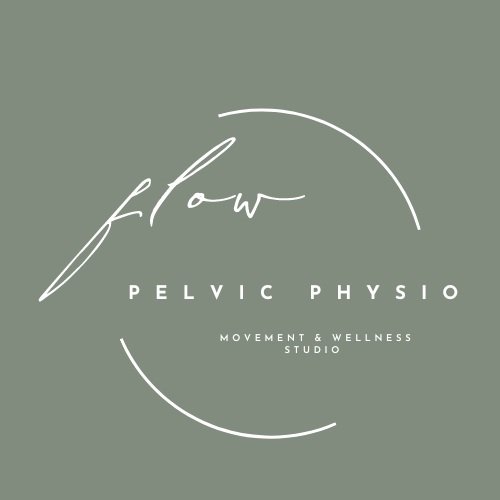Pelvic Organ Prolapse (POP)
The pelvic organs comprise the bladder, the bowel and the uterus. These are suspended high in the pelvis via ligaments (mainly the uterosacral ligaments) providing primary support to these pelvic organs.
The pelvic floor muscles are a hammock shaped sling of muscles in the base of the pelvis or the ‘floor’ which provide secondary support to the pelvic organs. These muscles also assist in closure of the urethra (wee tube) and anus, providing the continence mechanism (control or wee and wind!).
Image: Pelvic anatomy, pelvic organs, pelvic floor muscles
Factors that can affect the amount of laxity, or stretch, in these ligaments can include;
Pregnancy
Childbirth
Chronic constipation and straining on the toilet
Respiratory illness such as COPD
Being overweight or obese
Repetitive heavy lifting
Hysterectomy
Hypermobility conditions such as Ehlers-Danlos Syndrome
Pelvic organ prolapse or ‘POP’ happens when one (or more) of the pelvic organs sits low in the pelvis, often creating a sensation of bulging, dragging or heaviness. POP can be present without a woman having any symptoms.
Traditional classification of prolapse used the terms; cystocele, recotcele and uterine prolapse to describe the different types of POP. More recently, terminology has changed to anterior vaginal wall descent (cystocele) and posterior vaginal wall descent (rectocele) describing the vaginal wall that has been most affected and the corresponding pelvic organ.
Anterior = bladder or cystocele;
Posterior = rectum and/or small bowel or rectocele; and
Uterine = uterus or cervix
Vault = women who have had a hysterectomy the ‘cuff’ or top of the vaginal descends
Symptoms may include;
Vaginal heaviness or feeling of something slipping down in the vagina
Dragging sensation
Low back pain
Difficulty emptying your bladder
Difficulty emptying your bowel
Management options include;
Addressing modifiable contributing factors such as constipation, repetitive heavy lifting, pelvic floor muscle weakness, respiratory conditions and bodyweight
See a pelvic physio who can provide a tailored management plan specific to you which may include
-Pelvic Floor Exercises
-Strengthening the rest of your pelvis (i.e. glutes, hammys, core) with low impact resistance training or pilates
-A vaginal support pessary, which is a removable, user friendly, medical device that can be used to provide extra support to your pelvic organs, like a sportsbra!
-Optimising bowel emptying to prevent unnecessary straining on the toilet which can increase symptoms
-Speak to you GP regarding topical oestrogen cream to see if this is appropriate for you
-Speak with you Gynaecologist about alternative treatment options, in more serious cases surgery may be recommended
What to do if you are experiencing symptoms or have any concerns…..
Book an appointment for an individualised assessment and treatment plan. At Flow Pelvic Physio, our physios are specifically trained to manage prolapse and prolapse type symptoms, including pessary fittings.
Speak to you GP regarding medical management options
Early stage post natal and experiencing vaginal heaviness?
Firstly, don’t panic. Early stage postpartum women commonly present to clinic fearing the have a prolapse, which can be quite distressing, especially busy looking after a new born baby. During the early postpartum stage, the body is busy healing and the body’s hormones mean there is a ‘normal’ degree of laxity in the vaginal tissue. This can create prolapse like symptoms. If you are symptomatic and feeling uncertain, book an appointment for peace of mind and a clear management plan. Online bookings can be made by clicking on the link below.
***Disclaimer: Blog is for general education only, please seek an individualised assessment and treatment plan with a pelvic health physio



